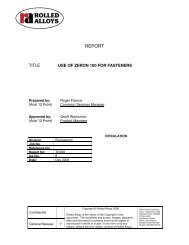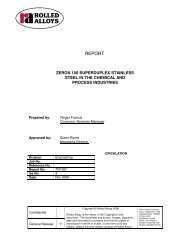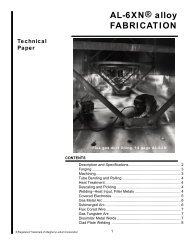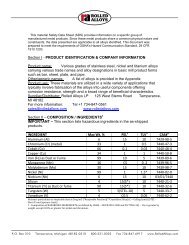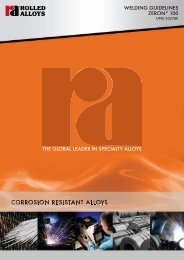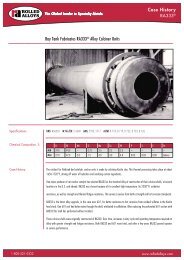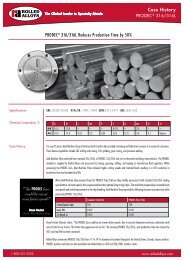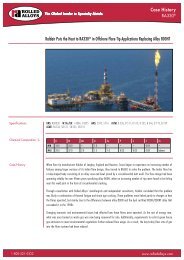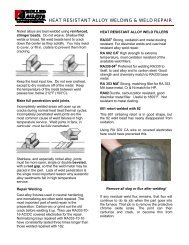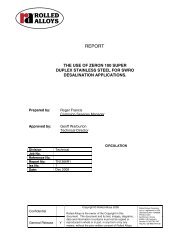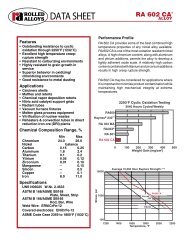RA330®a - Rolled Alloys
RA330®a - Rolled Alloys
RA330®a - Rolled Alloys
You also want an ePaper? Increase the reach of your titles
YUMPU automatically turns print PDFs into web optimized ePapers that Google loves.
Gas metal arc welding (GMAW) should be done at the lowest current which will give<br />
acceptable metal transfer and tie-in. With RA330-04 .045” dia. wire, for example, sprayarc<br />
transfer begins at about 190 amperes.<br />
3. USE RA330-04<br />
Choose the right weld rod. Normally this means RA330-04, both for weldability and to<br />
match the base metal properties. RA330-80 and RA333-70-16 electrodes, and RA333 ®<br />
wire can be used. Some high nickel weld fillers will also make sound welds in RA330, but<br />
at a sacrifice in oxidation resistance. These include 82 and 62 bare wire, and covered<br />
electrodes “A” (ENiCrFe-2) and 182.<br />
There are certain alloy weld fillers which just aren’t satisfactory for use with RA330 base<br />
metal. Specifically, do not use the AWS grades ER330 wire and E330-16 electrodes.<br />
Such “Type 330” fillers generally crack and require a great deal of repair when used to<br />
join RA330. Stainless electrodes, including 308, 309 and 310, crack when used on RA330.<br />
AWS E312 electrodes do make sound welds. But, an E312 weld embrittles severely<br />
around 600-1100°F (300-600°C) and is very weak at red heat.<br />
4. FULL PENETRATION JOINTS<br />
Make completely penetrated welds. Lack of adequate penetration is the most common<br />
cause of weld failures in service.<br />
This un-welded cavity acts as<br />
a crack starter. Repeated thermal<br />
expansion and contraction will cause<br />
cracks to grow out through the weld.<br />
Until it breaks apart completely.<br />
2




